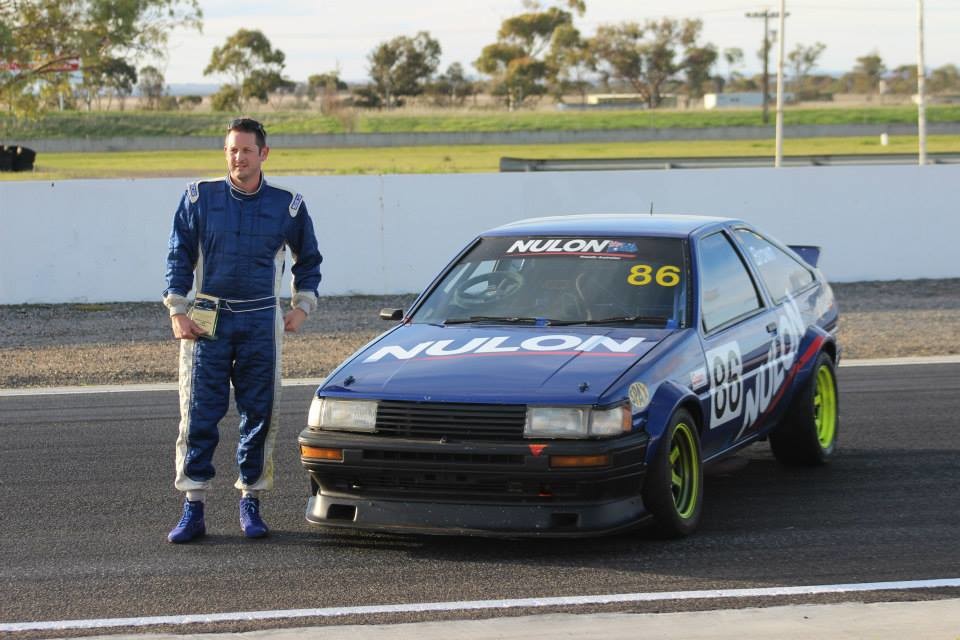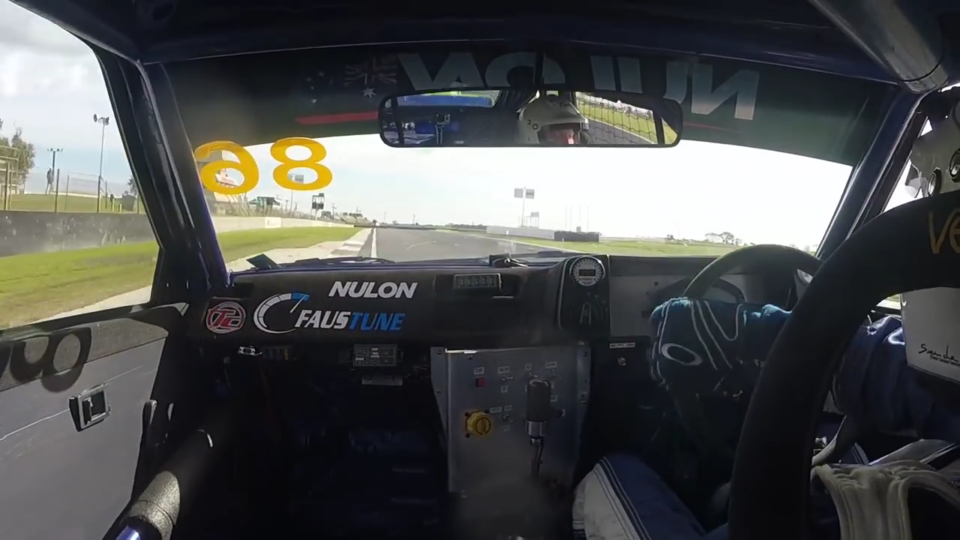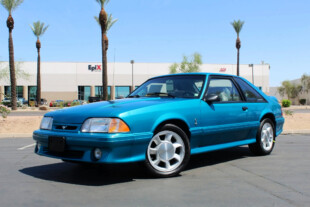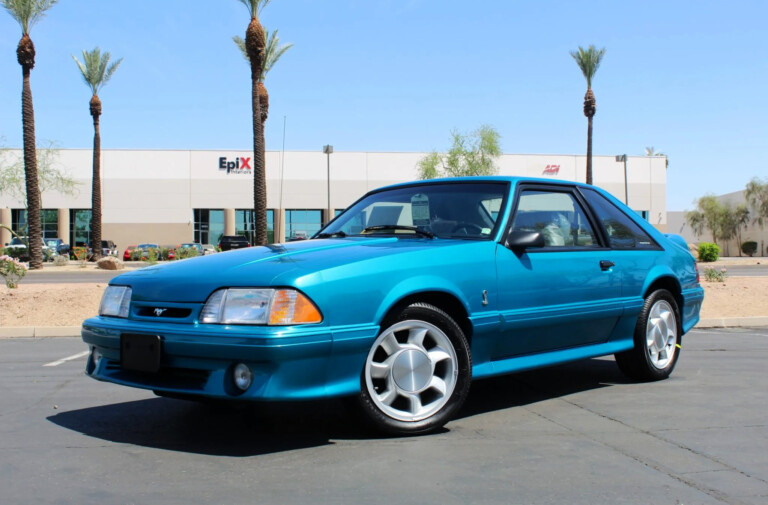Take one of the world’s best drift cars, increase the rear tire capacity, and put a punchy motor in the bay. That’s precisely what Chris Brown did with this sapphire Toyota AE86, which has risen to the top of the ranks in the Australian Improved Production class. Instead of relying on the naturally-aspirated 4AGE engine, he went the forced-induction route with a 2.0-liter, turbocharged 3SGTE most commonly found in the MR2.
In its current trim, the 3SGTE makes a few more than 400 horsepower courtesy of a BorgWarner EFR turbocharger and forged internals. Driven through a beefy, five-speed Holinger H-pattern, the car isn’t a one-lap special and can last long, nail-biting battles with similarly-spec’d machines.

Brown posing with his understated AE86. Photo credit: Nulon Motorsport
So, the straight-line speed is not an issue. However, putting that 400-odd horsepower to the ground neatly through 225-section Yokohama Advan A050 tires is a tall order, so he employed Suspension Concepts to maximize traction at the solid rear-axle. Still, it takes tidy lines and a squaring of the corner to get the most from this unassuming little Toyota.
A Torque-Limited Rearend
The power surplus is enough to roast the tires in Second gear quite effortlessly, so he wisely asks a lot of the front axle in the slower corners, turns in late, and squares-off the corner to the best of his abilities. This way, he capitalizes on the car’s natural agility and drives around its less-than-stellar traction. In a straighter line, the Yokohamas do a much better job of putting the power to the pavement, but flooring the throttle with so much steering lock dialed-in tends to dance the rear like, well, a drift car.

Photo credit: Racingcircuits.info
This point-and-shoot approach isn’t always feasible — through the faster corners, for instance — but his delicate steering helps compensate for his limitations there. However, the torque does seem to catch him out through the tricky sweeper on the northern side of the course. The long corner requires a series of shifts with the car laterally loaded (3:33). Brown does his best to keep the steering inputs as delicate as possible while covering this demanding corner, but it’s a challenge trying to keep the car balanced while simultaneously shifting, de-clutching, and using one hand to control the unassisted steering. We’ve delved into this issue before with a professional driver.
He can’t help avoid unloading the rear momentarily when lifting between gears, so he has to contend with some wobbles from the rear. This is most apparent during the shift into Fifth (3:33), where, as he goes to grab the shift lever, he realizes catching the slide requires two hands, prolonging the shift by a few tenths of a second. Without a doubt, this car punishes fools and needs to be driven with the utmost in care, especially in the faster corners.
Squaring the Corner for a Straighter Exit
The squared line, which gets the car rotated and straightened come corner exit, is most obvious in the final corner leading onto the front-straight, known as Clubhouse Corner. Preempted by a left/right switchback, Brown has to carefully nibble at the curbs to straighten his line without unbalancing the car, and then get enough direction change at the final apex to get as clean a run onto the straight as possible. At the end of his second lap (2:41), he commits a little too much to the middle of the esses, which forces him into the middle of the track prior to Clubhouse’s turn-in point. Now presented with a tighter corner, he has to dial-in heaps of steering-lock to negotiate Clubhouse’s apex, and the car slides wildly when he puts his foot down. Despite overcooking the exit onto a long straight, he still manages a very impressive 1:12.9.
For his final lap (3:54), he alters his approach to this section with great results. Instead of charging the middle of the corner, he gently rides over the middle curb in the preceding esses, which straightens the car and gives him a little more space to turn in for Clubhouse. This allows him to turn in on a diamond line and gets the car reasonably straight at the apex, so when the boost hits, he’s completed most of the steering work. Even still, his tires spin ever so slightly at the very end of the corner exit — but the oversteer is negligible.
This tidier lap nets him a 1:12.54; enough for the IP record. By making a few subtle tweaks of his line to straighten the car that much sooner, he spent more of his time traveling straight-ahead during his third lap, which trimmed four-tenths off his time. Clearly, with cars this sensitive and this powerful, the subtlest alterations to line and throttle application make a massive difference.






















